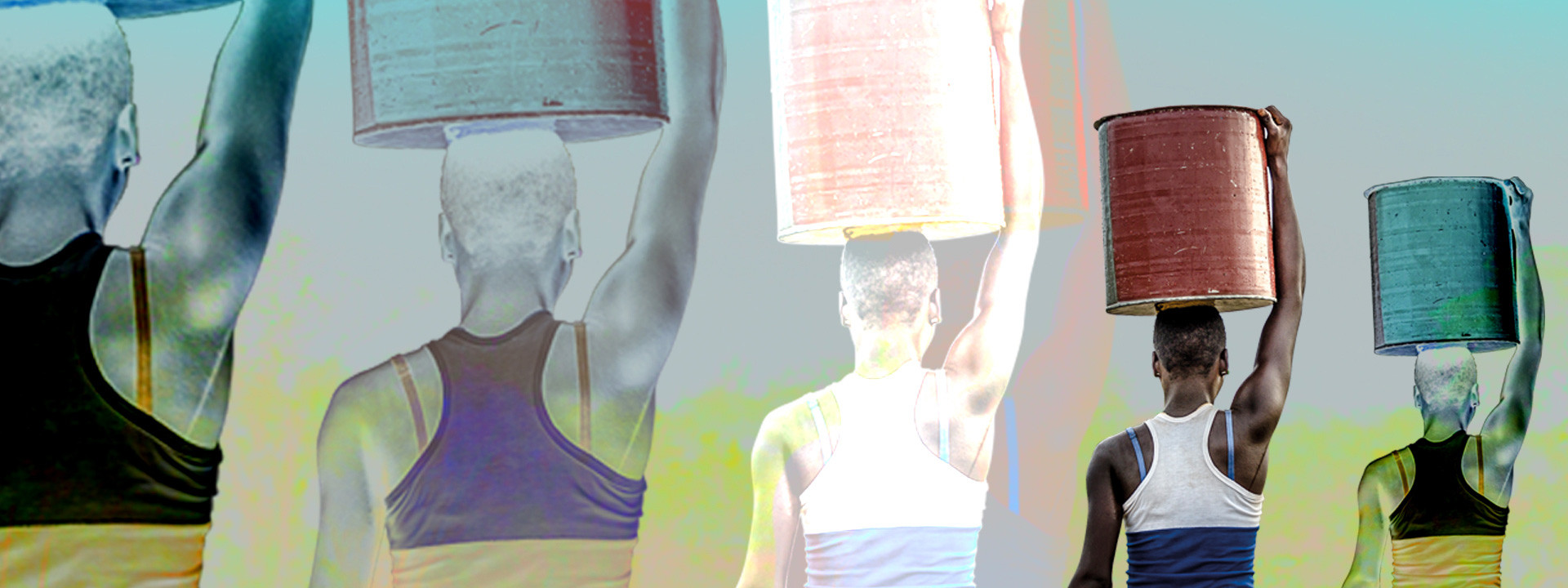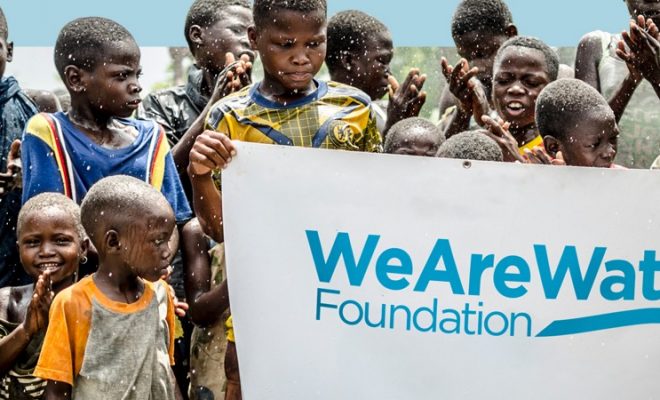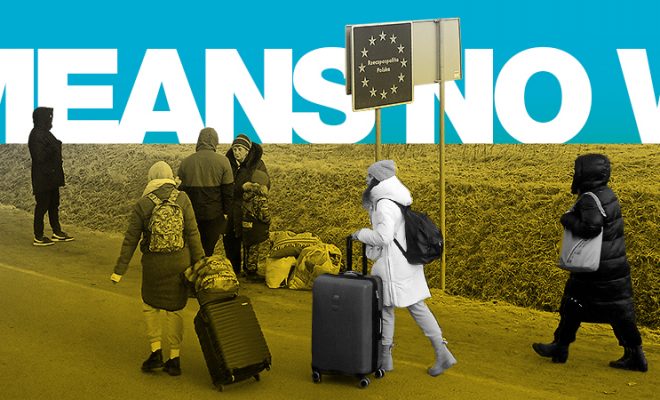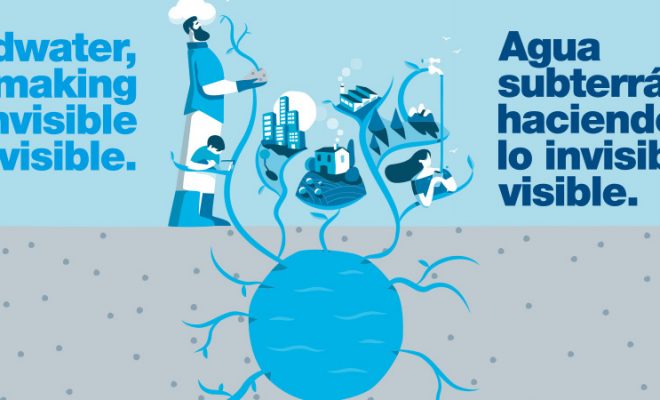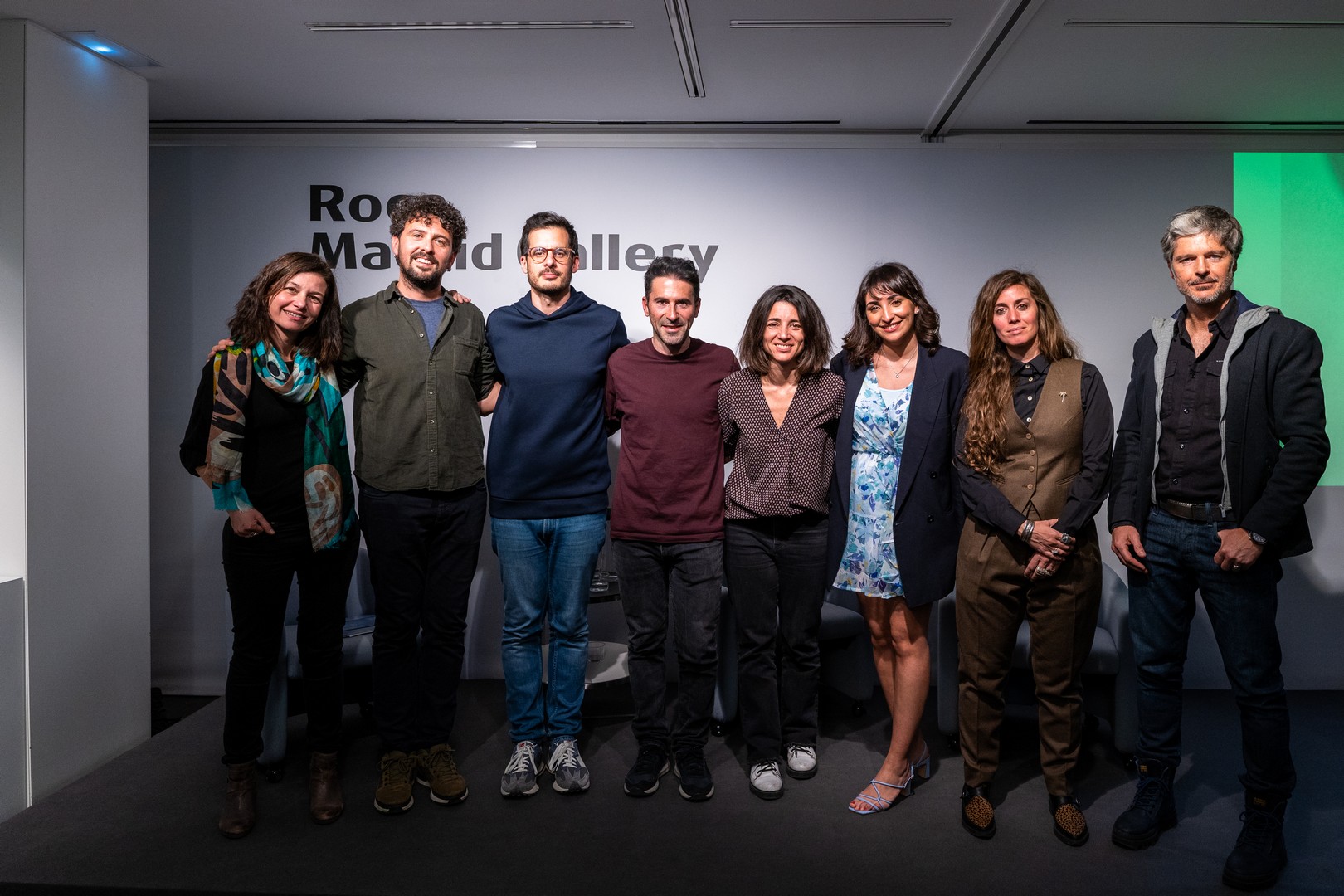
On World Water Day, we collaborated with the magazine 5W and presented Agua, its eighth issue, a refreshing example of pragmatic realism.
“One of the essential tools we use to achieve our goals is ‘contribution.’ Governments, institutions, corporations, and citizens must contribute and generate enough momentum to end this scourge: over 2 billion people lack access to water. And what better contribution than 5W’s.” On World Water Day, Carlos Garriga, the Foundation’s director, presented at the Roca Madrid Gallery the collaboration with the prestigious Spanish narrative journalism magazine, which has dedicated its eighth issue entirely to water.
This is another step forward toward the attainment of SDG 6. Water is part of the human fabric at all levels. In addition to needing it to live, it shapes our lives in ways we may not have been fully aware of until now. Water is often a vehicle of death, a geopolitical and military weapon, a cause of massive migratory movements, and, increasingly, part of the symptoms of our irrational actions on the world. The vision a publication like 5W provides on water is enriching because it broadens the collective awareness that we must accelerate changes. Its journalists, who specialize in providing us with a critical and plural vision of many hidden realities worldwide, have delved into the reality of water.
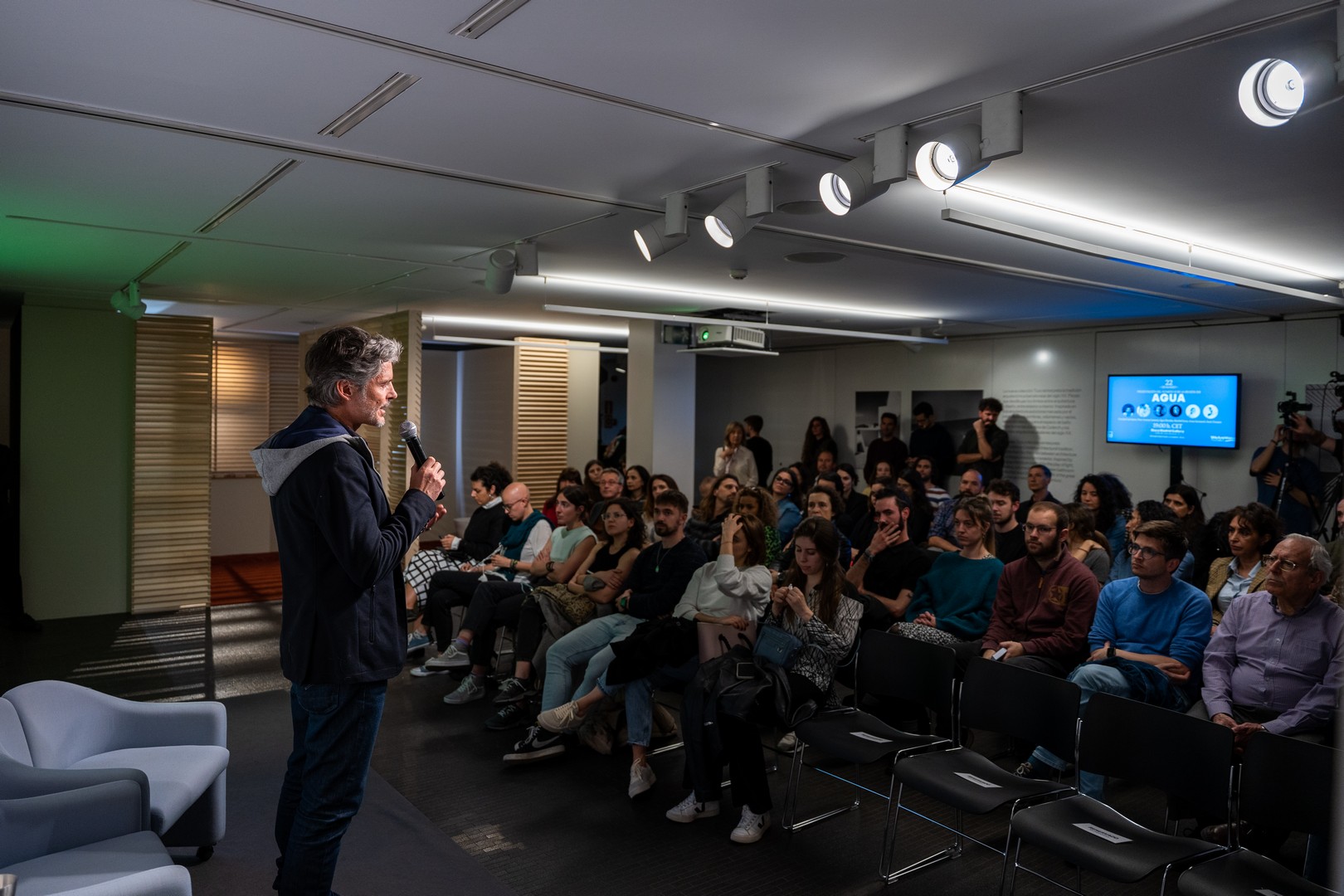
On World Water Day, Carlos Garriga, the Foundation’s director, presented at the Roca Madrid Gallery the collaboration with the prestigious Spanish narrative journalism magazine, which has dedicated its eighth issue entirely to water.
How to convey this message?
After 12 years of working and having first-hand knowledge of the problems in 33 of the countries that suffer the most, we know how difficult it is to reach the general public on a subject, such as access to water and sanitation, that offers enormous contrasts. Agus Morales, the magazine’s editor-in-chief, confessed his concern: “We were wondering: How can we make people understand the importance of water? We were afraid of not knowing how to talk about it, of being unable to convey a cross-cutting message. Still, we have realized that an excellent way to do that is through water: it is everywhere, in wars, the economy, politics…”
Agua is the result of extraordinary fieldwork. This is an excellent example of how reporting journalism broadens the scope of the message on a subject that requires acute awareness for the necessary collective change of course.
Anna Surinyach, documentary photographer and graphic editor of the magazine, explained her surprise at having to choose from more than 150 pieces on water that landed on her desk. “We realized that the magazine was lagging behind people’s concerns about water.”
The water that runs through the war
5W’s editor-in-chief is the author of one of the reports he describes as an “unexpected” result: The water that runs through the war, the result of his travels to areas of Ukraine since the outbreak of the conflict. He recounts his impression of entering the flooded houses in Kryvyi Rih due to the Russian bombardment of the Inhulets River dam upstream: “We have seen how water has been used as a weapon of war once again. Perhaps the role of water in the consequences of an act of war takes some of the drama out of it as if there were some natural consequences. The fact that there are no deaths in the floods also helps to downplay the importance of the attack. But the consequences could have been devastating.”
The article describes the tireless rebuilding work those affected are doing in their homes, with most of their belongings spoiled by the water. Agus explains the shift in the concept of “war front,” quoting the deputy mayor of Kryvyi Rih, whom he interviewed: “They bombed our most important hydroelectric project, but the goal was to flood the city and destroy three entire neighborhoods where 150,000 people live. They wanted to leave the city without water. The dam was not destroyed but damaged. If it had been destroyed, there would have been 150,000 dead.”
After visiting the border refugee camps, he offers us a valuable reflection: “There, having access to hot water, as they had in the homes left behind, is a mental health issue, an aspect that sometimes those of us who have never lacked water cannot comprehend.”
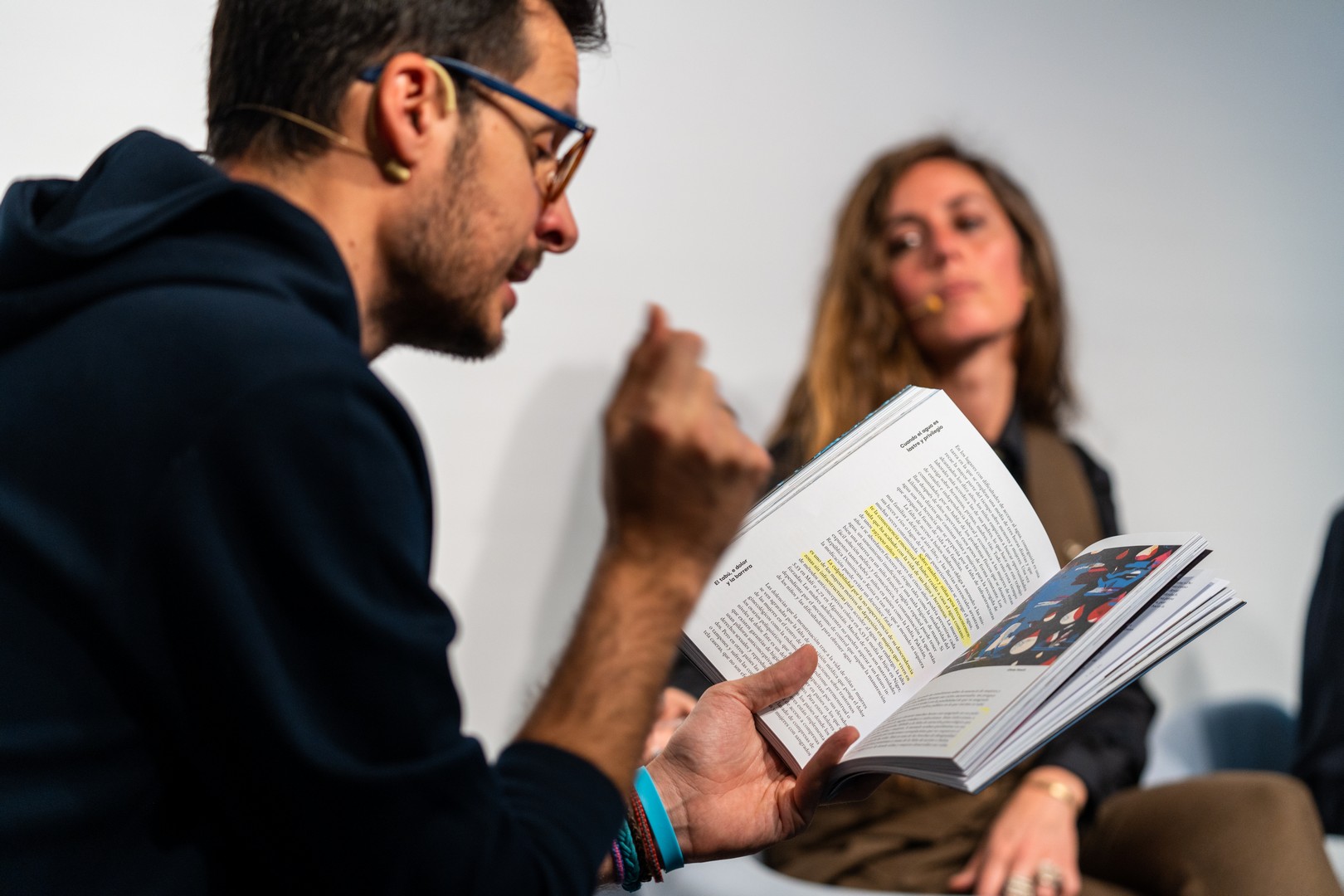
Agua is the result of extraordinary fieldwork. This is an excellent example of how reporting journalism broadens the scope of the message on a subject that requires acute awareness for the necessary collective change of course.
The most desired river
The first article in this issue is The most desired river. Its author, Nuria Tesón, explained how her interest in reporting on the Nile River had arisen. The significance of waterways as a very potent symbol in the cultural heritage of all civilizations is still valid and strong today. This symbolism is even more evident in the specific case of the great African river. Nuria emphasized how it brings together all aspects of human life and coexistence: “It is a report that speaks of water, conflict, life, and death around a river that evokes something compelling both among the riverside inhabitants and in us.”
In her work, she recounts the controversy created by the construction of a macro hydroelectric power plant in Ethiopia, whose dam will significantly alter the course of the river downstream in Sudan and Egypt. It is a common transboundary conflict between countries sharing the same basin: “I realized that there could also be manipulation, misinformation, and politicization around water as a resource. It is a very controversial issue where everyone wants to have the last word. When I started researching, I discovered very polarized information between studies that predicted disaster and those that extolled the benefits of the dam. Water is a political tool.” Nuria expressed her bewilderment at discovering that water scarcity significantly contributes to migration: “Droughts and floods are spreading in Egypt, Ethiopia, and Sudan, countries with a high birth rate and where demographic pressure produces food insecurity, famine, and migration towards Europe.”
Women who looked at their reflection in the water
Noor Ammar Lamarty, a Maghrebi legal activist and feminist, is the author of Women who looked at their reflection in the water, an article in which she delves into the gender inequality revealed by the lack of water and sanitation. “Water allows us to connect with the gender perspective, with the injustice of the lack of hygiene that we often talk about in general terms,” she pointed out. “But what are the real facts? 12, 13, and 14-year-old girls drop out of school because they lack the hygiene that would guarantee they don’t bleed in front of their classmates, with the added taboo menstruation implies in so many contexts around the world.”
Noor also puts the spotlight on the mothers who lose their babies to infections caused by open defecation. This drama increases with the lack of sanitation services in these impoverished areas: “A World Bank report states that 450,000 children could be saved each year if there were full access to water. This was already mentioned in the MDGs, but now we are talking about the 2030 Agenda… and we still have the same problem.”
She also highlighted the gender inequality in access to water: “Women, even if they are pregnant, have to fetch water from miles away; and if it is in poor condition and causes illness in the family, she also bears the blame. To put an end to this, there needs to be a generation of women leaders who can stop the pressure of forced marriages, rape, female genital mutilation… a generation that will put an end to the perpetuation of sexual discrimination.”
Poison
The magazine focuses on the worst thing we do to water: polluting it. Santi Donaire is the author of Poison, a photographic chronicle that shows how we are poisoning the water with intensive agriculture and its consequences. Santi pointed out: “With 17,000 tons per year, Spain is one of the countries in the European Union that uses more pesticides on crops under productive pressure.” He uses a computer term to describe our actions: “We hack water to increase productivity. But, unfortunately, this affects our health through food and degrades the land.”
The author shared memories of his native Jaén countryside: “When I was five or six years old, I would take a Sunday walk with my grandmother through the olive groves. I would hear the birds, there were rodents, insects… and my grandmother would plant chickpeas under the olive trees. There was a biodiversity that no longer exists; now you don’t hear the birds, there are no more reptiles… and on the ground, all you see is loose soil full of pesticides. We have poisoned the water and, through it, the people who work in food production and those of us who eat it.”
Santi provides shocking graphic data, such as the photograph of a contaminated placenta obtained from the work of two researchers from Granada who have been studying the presence of chemical pollutants in pregnant women, infants, and adolescents for 30 years. The report also shows images of the abandonment often experienced by agricultural workers exposed to these products, such as the well-known case of Omar Melliouib, who died after two days sulfating the greenhouse where he worked without any protection, abandoned at the gates of a health center, and whose family continues to demand justice.
Jakarta is sinking
Maribel Izcue traveled to the gigantic capital of Indonesia to narrate the horrifying example of how human action, combined with climate change, is causing the city to sink. In Jakarta is sinking, the journalist explains the chaotic water situation in a city where 11 million people are crammed together, two thirds of whom have no water supply: “To obtain water, they dig wells, which is reducing the aquifers and causing the city to sink, helped by the rising sea level. It is the ‘perfect storm,’ an accumulation of adverse situations that cause some areas to sink at a rate of 20 cm per year.”
Maribel explained that the most vulnerable always bear the brunt: “In the neighborhoods close to the sea, they cannot draw groundwater because it is salty, and people have to buy bottled water. A huge speculative trade has been generated, making many people spend up to a third of their salary on water, even more than food. Meanwhile, in other neighborhoods, water is free. Then there is the problem of pollution. Spills have severely polluted the thirteen rivers that converge in Jakarta, and the most vulnerable are not properly informed and do not have the resources to make their water drinkable.”
Well-narrated facts, the key to continuing moving forward
The Foundation has contributed to this issue of 5W with What Water Tells Us, a dictionary of the concepts and data that are fundamental to understanding the complex context of access to water and sanitation. However, perhaps the thoroughness and depth of the 18 reports make it unnecessary. Reading Agua is like delving into a well-narrated reality, a stimulating and educational reading that is increasingly necessary to understand and make decisions about the complex world of water.


